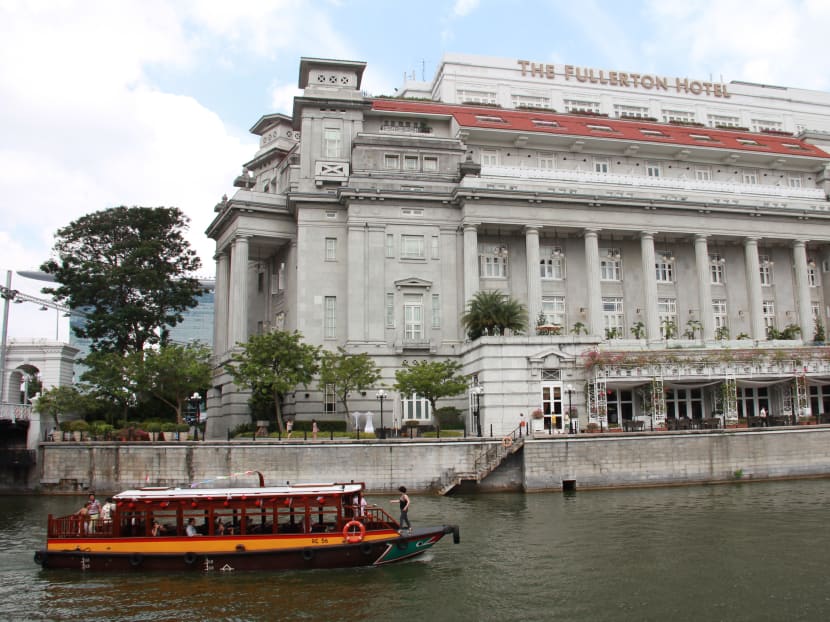Fullerton Hotel’s historical significance
SINGAPORE — The Fullerton Hotel, formerly known as the Fullerton Building, has been gazetted has Singapore’s 71st national monument. Here’s a look at its historical significance.
SINGAPORE — The Fullerton Hotel, formerly known as the Fullerton Building, has been gazetted has Singapore’s 71st national monument. Here’s a look at its historical significance.
GENERAL POST OFFICE, LIGHTHOUSE
The former Fullerton Building, named after the first Governor of the Straits Settlements Sir Robert Fullerton, was declared open on June 27, 1928.
Other than housing the General Post Office of Singapore, the building also housed the Chamber of Commerce and Exchange, the Marine Office, Singapore Club and other government departments.
It also provided other important services. In 1954, members of the public checked the election rolls register there. In 1967, it was one of seven centres that issued special passports to Singapore citizens for Causeway travel.
Boasting modern facilities for its time, the building had 14 lifts and automated mail-sorting equipment for the post office.
A lighthouse was installed on top of the building in 1958 to guide ships 30 miles away into the Singapore harbour. The lighthouse was replaced by the Bedok Lighthouse in August 1978.
LOCATION
The building is on the former site of Fort Fullerton which was built to protect Singapore’s harbour, river and trade.
DESIGN AND CONSTRUCTION
The Neoclassical building was designed by government architect Major Percy Keys, who saw that the building’s design — postal hall and sorting room in the basement and first level; main entrance facing Fullerton Road — would enable the post office to cope with the huge volume of mail and customers. Major Percy Keys also designed the College of Medicine Building.
The building, with its five frontages and colossal Doric columns, cost S$4.75 million to construct. It was made of reinforced concrete and finished with Shanghai plaster. A pair of bronze tablets was mounted at the building’s original entrance to commemorate the start of its construction.
The sculptural works on the building were by Italian-born sculptor Cavaliere Rudolfo Nolli, whose other works can be found at the former Supreme Court, College of Medicine Building and Bank of China. The façade also has ornate classical decorations created by Swiss sculptor Rudolf Wening.
ECONOMIC, POLITICAL SIGNIFICANCE
Economic policies designed to drive Singapore’s development were formulated in the former Fullerton Building.
The Ministry of Finance was housed in the building from 1960 to 1978, with Dr Goh Keng Swee helming the ministry from 1959 to 1965, and from 1967 to 1970. The Economic Development Board’s first office in 1961 was in the building, as was the Monetary Authority of Singapore, when it was formed 10 years later.
From 1960 to 1995, the Inland Revenue Department (now called Inland Revenue Authority of Singapore) was housed in the building.
Some of Singapore’s leaders began their careers in the government departments housed in the building. They include former President S R Nathan who worked as a Seaman’s Welfare Officer in the Ministry of Labour and later in the Labour Research Unit in the 1950s and 1960s; and former Prime Minister Goh Chok Tong who worked in the Economic Planning Unit in the 1960s.
Many political rallies were held at the space between the Fullerton building and the Malayan Bank Chambers between 1959 and 1980. The rallies later shifted to the new Fullerton Square, and then Boat Quay in the 1990s.







